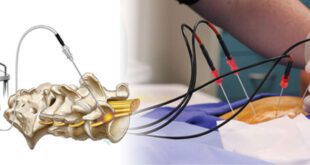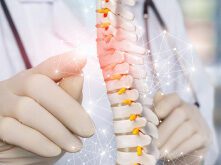 Unlike traditional hip and knee surgery, which can be intimidating for many patients, two minimally invasive procedures are proving effective for numerous individuals that suffer from knee and hip arthritis, injuries and degeneration. If done together, these two therapies can not only alleviate pain, but also restore and regenerate tissue.
Unlike traditional hip and knee surgery, which can be intimidating for many patients, two minimally invasive procedures are proving effective for numerous individuals that suffer from knee and hip arthritis, injuries and degeneration. If done together, these two therapies can not only alleviate pain, but also restore and regenerate tissue.
Radiofrequency Denervation
Using light sedation and local anesthesia called radiofrequency denervation is the answer that many individuals are waiting for to alleviate their pain. Neurotransmitters directly sensitize the nerve endings in our bodies via the brain. With radiofrequency denervation the nerves that are damaged, narrowed, or impinged, are treated with a low-level of localized heat, causing the nerve to stop sending signals to our brain through an interruption in the nerve conduction.
This procedure is entirely safe and effective. It has been used for many years with long-lasting results for people suffering from pain. The entire process is performed and monitored under fluoroscopy, which is a moving X-ray that is visible to the surgeon on a digital screen. The nerve endings are then located through a probe that is inserted through a tiny needle into the spinal area. Once the damaged nerve(s) are determined, a small lesion is created through the controlled heating of the probe through medium-frequency alternating current. This will alleviate the pain signals to the brain, allowing the patient to be virtually pain-free. The entire procedure takes approximately 20-30 minutes, and patients can resume normal activities within a short period of time. It is easy to reach the nerves of the hip and knee with this approach.
Radiofrequency denervation is able to treat other areas in the body as well. It is commonly used for headaches, facial pain, back pain, complex regional pain syndrome, peripheral neuropathies, trigeminal neuralgia, disc denervation, and neck pain.
Exosomes
Within the medical community, a cutting-edge treatment is proving to have exemplary results for its regenerative effects. Exosomes are produced from the plasma membranes of cells and are best explained as extracellular vesicles. Exosomes are nanosized particles that are released due to an immune response. Some medical professionals are reporting that they are more regenerative and effective than stem cells. Because they act as intracellular communication messengers within the body and have the ability to move between multiple cells, they are also incredibly useful when paired with stem cell therapy.
Dr. Sunil Panchal of the National Institute of Pain has been committed to regenerative medicine and stem cell therapy for several years. He explains exosome therapy further, “This is an exciting new approach for regenerative medicine. Unlike PRP which has limited growth factors, or bone marrow and fat aspirate, which has an unknown quantity of stem cells, or growth factors from the patient, or the use of fetal cord blood stem cells (which has unknown function after thawing and also the risk of tumor formation from foreign DNA), exosomes are a highly concentrated and reproducible source of growth factors for regenerative techniques.
“The other approaches typically take six months to see any results. With exosomes, I’ve had some patients begin to notice improvement as early as 2-3 weeks. And since this is an acellular product, there is no risk of tumor development.” says, Dr. Panchal.
Dr. Panchal has treated patients with exosome therapy for pain in the cervical and lumbar facet joints, sacroiliac joints, knees, hips, ankles, elbows, shoulders, ligament injuries, and also degenerative discs. These tiny exosome communicators that secrete therapeutic and regenerative effects to the cells and tissues throughout the body are becoming highly-sought-after by many patients that have suffered from pain and chronic disorders. Some of the additional findings within peer-reviewed studies are as follows:
• Self-Renewing Capabilities
• Cellular Differentiating Ability
• Tissue Repair
• Anti-Inflammatory Effect
• Immunosuppression
• Neuroprotection
Although surgery is critical in certain situations, finding alternative methods to treat the underlying condition is always the first step. The National Institute of Pain is a state-of-the-art facility that specializes in the treatment of spine and orthopedic conditions, as well as acute and chronic pain management. At the National Institute of Pain, they treat each patient individually, using the latest equipment and various innovative procedures to diagnose pain and determine your care needs. Their goal is to strive to deliver the highest quality of comprehensive care for those who are suffering from spine, joint, and nerve injuries. Please visit their website at www.nationalinstituteofpain.org, or call them at (813) 264-PAIN (7246).
The National Institute for Pain
(813) 264-PAIN (7246)
www.nationalinstituteofpain.org
Check Also
Breaking Through the Pain: How the Stealth Laser is Revolutionizing Nerve Pain Treatment
Nerve pain, or neuropathic pain, is one of the most challenging conditions to treat in …
 Central Florida Health and Wellness Magazine Health and Wellness Articles of the Villages
Central Florida Health and Wellness Magazine Health and Wellness Articles of the Villages


